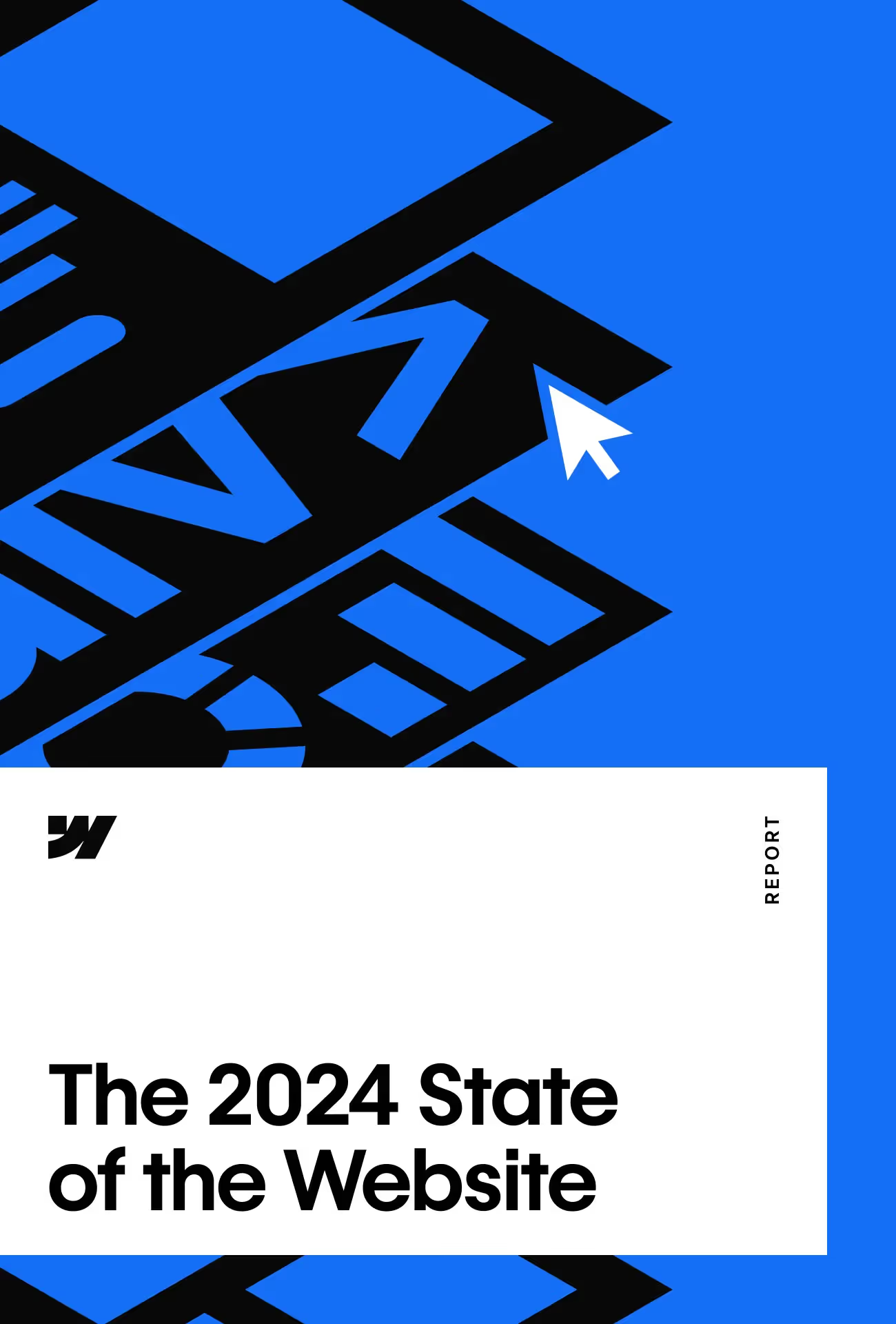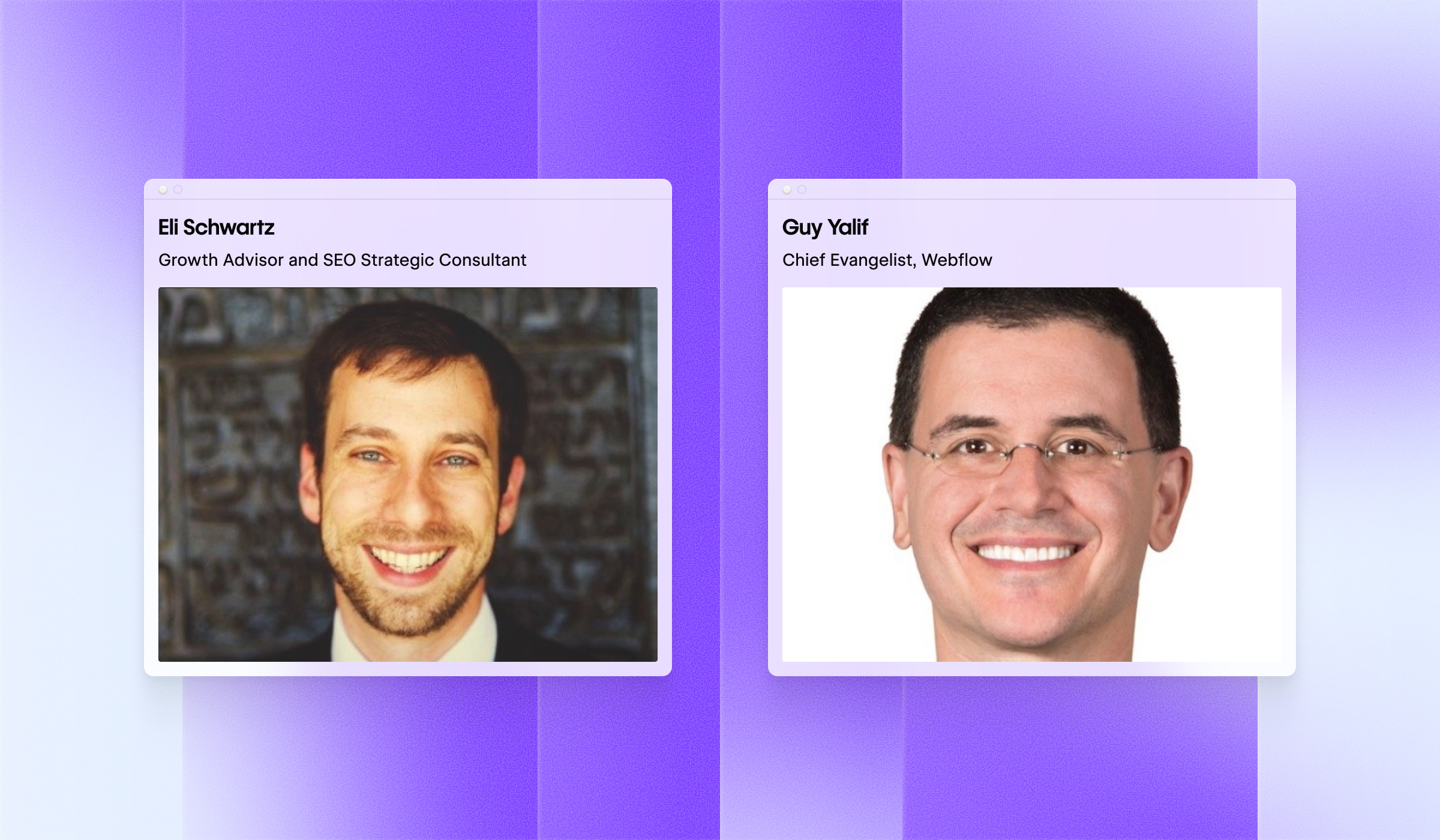The 2024 State of the Website
Key challenges and opportunities for marketing leaders

Thank you for downloading!
The report opened in a new tab, and we sent a copy of it to your email.
About this report
Webflow conducted an online survey between July 2023 and August 2023 across the United States and Canada using a rigorous, multi-level screening process to ensure only suitable candidates participated. Respondents are all marketing leaders, which are defined as someone who holds a Director-level position or above in a marketing department. All respondents work at an enterprise organization in the public or private sector with at least 50 employees.
Foreword
Today, websites are the cornerstone upon which modern, enterprise businesses create and grow their online presence and connect with their audiences. They serve as a digital billboard — the first point of contact with potential customers, a reflection of your company’s identity, and a source of truth for critical information about your brand, mission, and offerings.
As competition and consumer expectations rapidly shift, a well-designed and well-executed marketing site is not a luxury but a necessity. And while marketing leaders understand the positive impact a website can have on their bottom line, many continue to struggle when it comes to building, developing, and maintaining them — and this comes at a cost.
Growing businesses looking to drive innovation at scale and deliver relevant customer experiences faster need a winning digital strategy to get them there. However, creating truly stunning web experiences is a delicate art that requires a balance of people, processes, and technology.
In our experience serving hundreds of thousands of customers globally over the last decade, we know striking the right balance can be challenging. That’s why as we enter this new era of building for the web — one that merges the power of design and development — it’s up to marketing leaders to eliminate constraints and guide their teams into a future where they can bring their most creative and impactful ideas to life on the web.
— Shane Murphy-Reuter, Chief Marketing Officer, Webflow
Executive Summary
Section 1: Keeping up with customer expectations
Marketing teams are spending on average$1.6Mon website teams and software annually.
The website is becoming an increasingly expensive and time-consuming asset to manage, and organizations are struggling to quickly deliver on their customers’ needs. This presents a major, ongoing challenge for marketing teams, who are facing more pressure to innovate than ever before.
Section 2: Website ownership
Website ownership is a persistent challenge for81%of marketing teams.
While marketing teams are commonly the owners of the customer experience, the large majority of these teams are currently restricted by developers and other teams — inhibiting their ability to deliver on their goals.
Section 3: The web tech stack
60%of marketing leaders believe their current web tech stack is missing the mark.
Most marketing leaders agree that they need to improve their websites to achieve their business goals. However, their current stack fails to sufficiently empower their business users to make this a reality.
Section 4: The impact of modern web tools
50%of marketing teams that have implemented no-code or low-code tools are already witnessing incremental benefits.
Organizations are seeking out modern web tools to help them deliver on their business goals, and early adopters are already seeing measurable impact when it comes to collaboration and workflows.
Closing thoughts: The work ahead
Marketing leaders need to establish the right harmony between their teams, technology, and processes to achieve web success.
Relying solely on technology is not a scalable solution. In order to supercharge their websites, marketers must build a new operating model — spanning team structures, collaborative processes, and workflows — that allows them to better leverage web development tools and deliver stunning digital experiences to their customers.
Schedule a demo
Build better websites — faster — with the power of Webflow. Backed by advanced security, custom traffic scaling, guaranteed uptime, and much more.
Build better websites — faster — with the power of Webflow. Backed by advanced security, custom traffic scaling, guaranteed uptime, and much more.
























